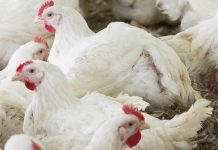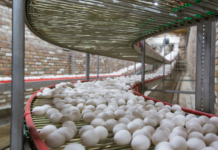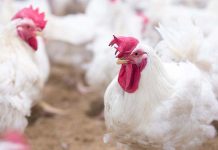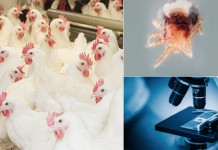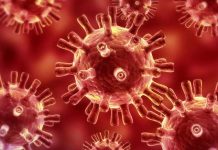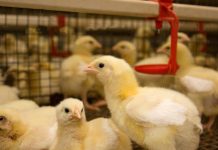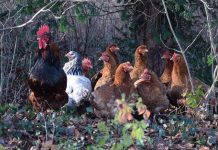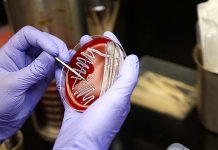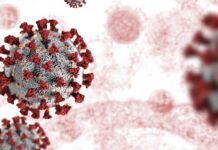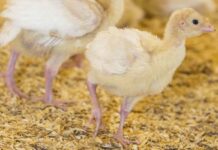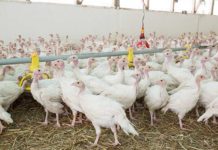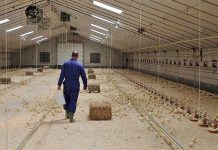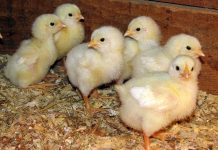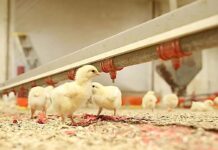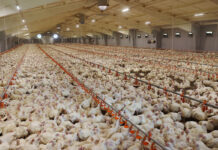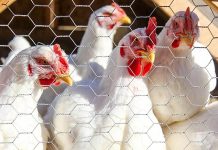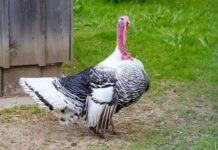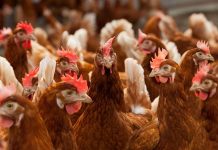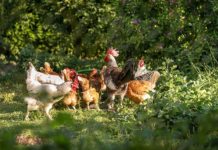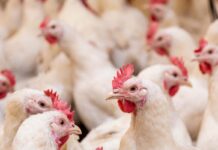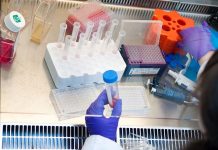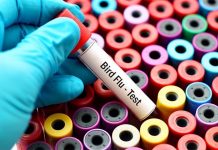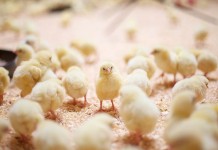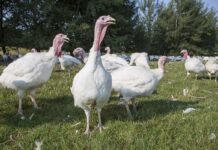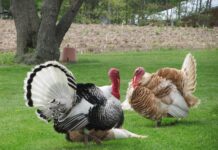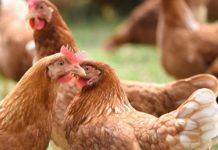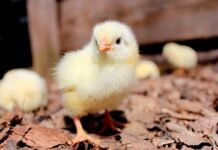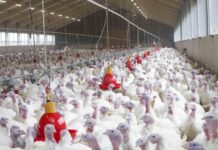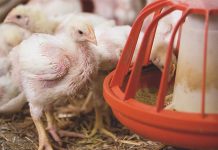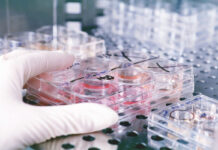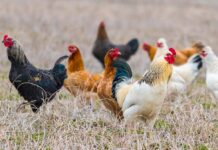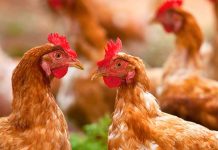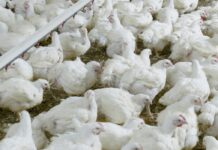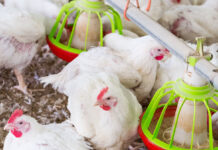Wooden Breast Disease
The emergence of Wooden Breast Disease in commercial broiler chickens has been associated with significant economic loss in the poultry industry resulting from severe...
Pulsed ultraviolet light processing of eggs
In recent years, pulsed ultraviolet light has been shown to reduce microbial pathogens on the surface of shell eggs, crucial for maintaining good chick...
Antimicrobial drug resistance in poultry. What do we know about risk factors?
There is an increasing amount of published surveillance and diagnostic submissions data, providing information on prevalence and trends of antimicrobial drug use and antimicrobial...
Characterizing litter mite communities. Applications of DNA barcoding for management strategies
The use of DNA barcoding can facilitate rapid biodiversity assessments of fastidious taxa - litter mite communities - by delineating species using molecular operational...
Pirbright’s livestock coronavirus research
The Pirbright Institute is aware that misinformation regarding the Institute and its research is circulating on social media following an outbreak of a new...
Maternal derived antibodies have a role on the impact of Original XPC
The objective of this study was to evaluate the role of maternally derived antibodies on the immune-modulatory capacity of XPC on antigen-specific humoral immune...
Major histocompatibility complex and genetic resistance to Infectious Bronchitis Virus
Infectious bronchitis virus (IBV) is an endemic disease of chickens responsible for considerable economic losses to the poultry industry worldwide. IBV replication leads to...
DNA region in chickens identified for disease resistance
One region in the DNA explains a large difference in possible disease resistance betweenchickens. This was discovered by researchers of Wageningen University & Research...
Investigating diseases affecting poultry production
Severe diseases such as highly pathogenic avian influenza and velogenic Newcastle disease are still a concern for poultry producers and government agencies alike. Companies...
Chlamydia spp. detected in poultry in Piedmont, Italy
Chlamydia spp. are agents of re-emerging infections in poultry worldwide and deserve attention from a public health perspective due to the well-known zoonotic nature...
How to guard your hatchery against biosecurity threats
Biosecurity, by simple definition, is a set of procedures undertaken to limit the spread of infectious pathogens to a susceptible population. It is, however,...
Researchers examine the role of APEC in turkey cellulitis
USPOULTRY and the USPOULTRY Foundation announce the completion of a funded research project at the University of Georgia in Athens, Georgia, in which researchers...
Footpad dermatitis in market turkey hens. Bird density and bedding material relationships
Lameness
and poor footpad condition can be major issues for meat-type poultry resulting
in their decreased well-being and decreased productivity. A large body of
research exists for...
Adaptability of bird flu poses threat to poultry
New insights from a study of the 2016/17 bird flu outbreak show how highly pathogenic bird flu viruses – which are likely to cause...
Nutritional strategies against pathogens in poultry
Salmonella Enteritidis and Campylobacter jejuni are the two major foodborne pathogens transmitted through poultry products. Since chickens are the reservoir hosts of these pathogens,...
The Salmonella initiative
An enduring challenge and reputational issue for the egg industry is caused by the presence of Salmonella enterica serovars (particularly some Typhimurium serotypes), which...
How Necrotic Enteritis affects animal’ welfare and performance
Necrotic Enteritis (NE) affected flocks have poor enteric health and nutrient digestibility leading to decreased performance and increased excretion of nutrients.
Evidence suggests that...
Trouw Nutrition presents research during the Poultry Science Association Meeting
Synergistic use of different feed additives may support producers’ antibiotic reduction programmes.
Reducing antibiotic use in poultry production is an urgent objective shared by stakeholders...
How do coccidiosis challenges influence lipid digestibility and energy utilisation?
Coccidiosis continues to be one of the most pervasive and economically detrimental diseases in commercial poultry production. Controlling this enteric disease is an even...
Towards practical methods for assessing ILTV vaccine take
In response to ILTV outbreaks, live vaccines are typically administered at 7-14 days of age in drinking water via nipple drinkers which may not...
Research shows nutritional effects of Coccidiosis vaccination
A funded research project on Coccidiosis was completed at the University of Arkansas in Fayetteville, Arkansas, that shows the nutritional effects of coccidiosis vaccination.
Project...
The effects of diet and epigenetic alterations on the gut microbiome, inflammation and poultry...
The gut microbiota is a fundamental force influencing diverse aspects of avian physiology. Microbiome studies are at a critical juncture and facing a challenging...
Biological control of Salmonella in the poultry industry: a European perspective
Salmonella remains one of the most important foodborne bacterial pathogens worldwide, and is frequently linked with the consumption of contaminated poultry meat and eggs....
Managing CO2 and fresh air to optimise hatchability
Last year I was invited to a layer hatchery that was reporting slightly lower hatchability than its sister hatcheries, despite using eggs from the...
Prevalence and antimicrobial resistance of thermophylic Campylobacters in poultry
Campylobacter spp. is a leading cause of foodborne diarrhea. The most common source of infection is contaminated food, mainly poultry meat.
The uncontrolled use of...
Interrupting cholesterol pathway reduces Marek’s disease spread
In a new discovery, scientists from The Pirbright Institute confirm that cholesterol production and transport play a crucial role in how Marek’s disease virus...
Pirbright research to boost vaccine production
Scientists at the Pirbright Institute have received money, which will enable research into boosting vaccine yields by up to ten fold. The funding was...
Detection of antibodies against Chlamydia species in chicken serum
Avian chlamydiosis is a bacterial infection caused by Chlamydia bacteria. The currently available tests distinguish Chlamydia species based on genetic material. Researchers from Wageningen...
Turkey dermatitis/cellulitis: where are we headed?
Clostridium septicum is a ubiquitous, spore-forming bacterium associated with spontaneous gas gangrene in both livestock and humans. The spores can persist in harsh environments,...
Microbiological consequences of different housing systems for laying hens, with particular reference to Salmonella...
A significant proportion of human illnesses caused by Salmonella are linked to the consumption of contaminated eggs. In response, substantial government and private industry...
A diagnostic laboratory perspective for pathogen detection
Detection of infectious diseases can generally be broken down into laboratory detection of the pathogen or detection of the immune response to the pathogen....
Sample management and handling for diagnostic testing
Diagnostic testing is an important and widely used tool in commercial poultry husbandry. A key to best use of diagnostic testing, is to begin...
Chicken study probes resistance to food bug
Receiving gut microbes from resistant chickens does not lessen chickens’ susceptibility to bacterium that causes food poisoning.
Susceptible chickens became even more susceptible to Campylobacter,...
A multidisciplinary research approach on Avian Influenza in Italy
The Avian Influenza epidemic of 2016-2017 had been the largest in Europe in more than 10 years. The circulating virus was a Highly Pathogenic...
Rapid in vitro antimicrobial screening assay against Campylobacter
Research was undertaken to adapt a multi-well antimicrobial assay as a fast and reliable method to screen large numbers of plant extract treatments against...
Enumeration of Ascaridia Galli eggs in chicken excreta
Excreta counting techniques in eggs can provide valuable information for assessing flock infection levels, selecting nematode resistant chicken breeds and for determining anthelmintic efficacy.
Although...
Get the most from your diagnostic laboratory.
A field perspective.
You notice the
mortality is up this morning in one of your brooder houses. Your first thought
might be “better take some birds to...
Detection and quantification of Gallibacterium anatis and Mycoplasma synoviae
Mycoplasma synoviae is one of the most common preconditions for secondary bacterial infections in poultry. It causes subclinical infections of the upper respiratory tract,...
A new view of how class I molecules fight diseases
Classical class I molecules of the major histocompatibility complex (MHC) play crucial roles in defence against viruses.
The class I molecules bind pieces of protein...
Researchers investigate the characteristics of Turkey Hepatitis Reovirus
USPOULTRY and the USPOULTRY Foundation announced the completion of a funded research project at the University of Minnesota in which researchers investigated the characteristics of Turkey...
Understanding resistance to different Infectious Bronchitis virus genotypes
In previous experiments, we have challenged major histocompatibility complex (MHC) congenic chicken lines available at UC Davis with an infectious bronchitis virus (IBV) M41...
How a single Avian Influenza protein can increase period of infection
New research led by scientists at The Pirbright Institute has shown how an Avian Infuenza a virus protein, called PB1-F2, is able to shut...
Engineering vaccines for multiple strains of IBV
In new work funded by a Biotechnology and Biological Sciences Research Council (BBSRC) researchers at The Pirbright Institute and The Roslin Institute have published...
Integrated Microfluidic Device for rapid Avian Influenza virus capture
Rapid detection of avian influenza virus (AIV) is highly desirable during outbreaks or routine AIV surveillance.
In this project, the preliminary results in developing a...
Research shows how Infectious Laryngotracheitis can spread from vaccinated flocks
The research on how Infectious Laryngotracheitis can spread from vaccinated flocks was made possible in part by an endowing Foundation gift from Claxton Poultry...
Comparison of four injection sites for Se bacterin vaccine in commercial pullets
As commercial pullets farming transitions from rearing a bird on a single level in conventional-style housing to rearing a bird in a multi-level aviary,...
Researchers characterize selected variant Avian Reovirus strains
USPOULTRY and the USPOULTRY Foundation announce the completion of a funded research project at the University of California, Davis, in which researchers looked to...
Protozoal management in turkeys
The two turkey protozoa that cause significant animal welfare and economic distress include various Eimeria species of coccidia and Histomonas meleagridis. For coccidia, oral...
Boosting the cell-mediated immunity in chickens post-hatch via pre-hatch delivery of nucleic acids
Respiratory virus infections such as Avian Influenza, infectious laryngotracheitis and infectious bronchitis lead to high morbidity and mortality in chickens globally.
Given the limitations...
The declining trend of salmonellosis cases in the EU has levelled off
Cases of Salmonella Enteritidis acquired in the EU have increased in humans by 3% since 2014 says the report, which is compiled by the...
Infectious bursal disease viruses may swap genetic material during infection
Live cell imaging has been used by researchers at The Pirbright Institute to reveal new information about how different strains of infectious bursal disease virus...
Targeted preharvest interventions against Salmonella in turkeys
Salmonella is a foodborne zoonotic pathogen prevalent in poultry production, including turkeys. The pathogen is a constant threat to human public health because of...
Increased cecal butyrate concentrations protect against Salmonella Enteritidis
Butyrate is a molecule that is extensively studied as a feed additive to improve gut health and animal performance. It also has been described...
Influenza antibodies made by Pirbright reduce disease in chickens
Scientists at The Pirbright Institute have engineered synthetic antibody
molecules that can be administered to poultry to reduce the symptoms of Influenza, as well as...
Non-antibiotic intestinal interventions
As the countdown towards implementation of the FDA’s Guidance for Industry 213 continues, interest in non-antibiotic intestinal interventions has increased. Earliest efforts in this...
Pathogenesis of egg infections by salmonella – Second Part
Early protection has been demonstrated after primary live vaccine administration early post-hatch but this effect is serotype-specific, while cross-protection between some serotypes has been...
Frontiers in human and veterinary antibody discovery
The Pirbright Institute hosted the inaugural Comparative Veterinary Immunology Group (CVIG) meeting Frontiers in Human and Veterinary Antibody discovery on 26 and 27 November,...
Biosecurity measures and new vaccines to combat the spread of bird flu
The recent H5N6 bird flu outbreak is confined to the south of England, partly due to the introduction of an Avian Influenza Protection Zone...
Vaccination of turkey breeders to control Salmonella
Salmonella continues to be a top food safety concern for the turkey industry, the USDA, and the consumer. Salmonella bacteria are the most frequently...
Research reveals method to improve Escherichia coli vaccines
A funded research project at the University of Georgia in Athens, Ga. was completed, in which researchers revealed a method to improve Escherichia coli...
A review of novel biological alternatives to antibiotic therapies in poultry
As poultry producers in Australia continue to limit antibiotic use, increasing numbers of alternative therapies and chemical biosecurity products are being used to overcome...
Cecal coccidiosis in turkeys
Cecal coccidiosis is an important disease that affects the cecal integrity of turkeys and may result in watery feces with flecks of blood. In...
First-Ever Report of antimicrobial ase across U.S. broiler chickens and turkeys
Dramatic antimicrobial usage changes and improved antimicrobial stewardship.
The new report shows dramatic reductions of turkey and broiler chicken antimicrobial use over a five-year timeframe....
World Veterinary Day – celebrating the value of vaccination
The theme of this year’s World Veterinary Day – celebrated April, 27th – was Value of Vaccination. To celebrate it, some of the vaccinology...
Research examines novel next generation sequencing techniques
USPOULTRY and the USPOULTRY Foundation announce the completion of a funded research project at the University of Georgia in Athens, Georgia, in which researchers...
Collaborative regulatory approach can reduce antibiotic use in animal production
As global concern about the human health threat posed by antimicrobial resistance continues rises, governments continue to introduce legislation to curb antibiotic use in...
UK Veterinary Vaccinology Network
Veterinary researchers from around the world came together at this year’s joint UK & International Veterinary Vaccinology Network Conference on the 9-10 January 2019...
Infectious bronchitis virus shuts down cell stress signals
A new study from scientists at The Pirbright Institute and collaborators at the University of Surrey provides evidence that infectious bronchitis virus (IBV) can regulate the...
Salmonella Reading in commercial turkeys. Why now and how?
Salmonella sp. is one of the most common bacteria associated with foodborne illness in humans. Each year in the United States, foodborne salmonellosis causes...
Linear Epitope Mapping of B-cell responses following immunization with Avian Reovirus S1133
Avian reovirus is a causative agents of tenosynovitis and viral arthritis. Commercially available reovirus vaccines do not protect against challenge with emerging variants associated...
Pirbright’s new Avian Influenza vaccine
An improved poultry influenza vaccine has been developed by researchers from The Pirbright Institute. The potential vaccine triggers a rapid immune response which protects...
Research provides Insight on colonization of broilers by Salmonella
USPOULTRY and the USPOULTRY Foundation announce the completion of a funded research project at Auburn University in Auburn, Alabama, in which researchers were able...
How Marek’s disease may directly affect the chicken immune system
Marek’s disease virus (MDV) causes disease in chickens and is estimated to cost the global poultry industry up to US $2 billion each year.
In...
Pathological manifestations of highly pathogenic and predominant Eimeria species in turkeys
Coccidiosis is caused by intra-cellular enteric protozoan parasites of the genus Eimeria. Eimeria is a gastrointestinal parasite with a complex life cycle involving an...
Overcoming challenges of antibiotic-free production
Antibiotic use once became a conventional, on-farm practice to prevent health issues and boost growth in poultry. Yet, public health concerns about rising bacteria...
Poultry gut health critical to NAE production
The production of “No Antibiotics Ever” (NAE) poultry is a common trend worldwide today. Despite scientific evidence indicating that specific antibiotic growth promoters (AGP)...
An alternative method to fight Avian Influenza Virus
A recent project was completed at the University of Iowa, Iowa City, Iowa, in which researchers developed a mobile system that can inactivate Avian...
Use of comparative genomics to identify vaccine candidates for Campylobacter Jejuni
Interventions to control and reduce the incidence of Campylobacter jejuni colonization in poultry is important in order to reduce the burden of foodborne illness in humans....
Clinical coccidiosis in broilers with concurrent infection of Eimeria maxima and Eimeria praecox
Coccidiosis is a complex disease in chickens caused by protozoan parasites in the genus Eimeria. As Eimeria species are ubiquitous in poultry facilities, coccidiosis...
Profiling Salmonella serotypes through broiler processing
USPOULTRY and the USPOULTRY Foundation announce the completion of a funded research project at the University of Georgia in which researchers profiled Salmonella serotypes through broiler processing.
The...


